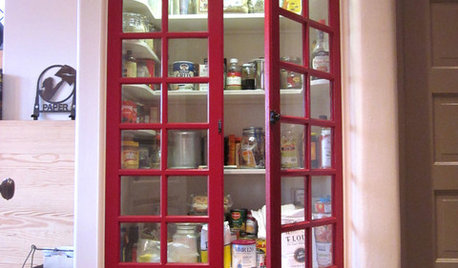I found the following story in today's local(Albuquerque, NM)paper. It figures....
Wednesday, August 3, 2005
Cement Shortage Hits N.M. By Andrew Webb Staff Writer
Been worrying about the cement shortage? Many Albuquerque area contractors and construction companies say they weren't either, until last week.
"We knew nationally it had hit pretty hard. Until last Tuesday we had no warning there was going to be a shortfall here," Bradbury Stamm Construction president Jim King said of the news that the state's largest supplier of cement a key building block of concrete would begin rationing supplies.
"We had no delivery issues whatsoever. Then suddenly, we can't get concrete," he told the Journal on Tuesday. "We could have expected some adjustment, but we weren't expecting anything this drastic."
Indeed, a year-long global dearth of cementÂbrought on by construction booms in China and former Soviet Bloc countries, rebuilding in tsunami-ravaged southeast Asia and hurricane-damaged Florida, and fueled by record U.S. housing starts has hit home in the Duke City and surrounding locations.
Though they're still assessing the damage, most contractors say construction delays and higher prices for home buyers and other consumers are likely. "Only 60 percent of the concrete that was originally available is available now," said Kevin Chavez of Albuquerque's Premier Concrete. The foundation company's customers include Pulte Homes and KB Home. "A lot of smaller contractors aren't getting any," he said. "This is going to increase the costs of commercial and residential concrete by 25 or 30 percent."
RATIONING HITS HOME
GCC Rio Grande Inc., a subsidiary of Mexico-based Grupos Cementos de Chihuahua and operator of New Mexico's only cement plant, told its customers last week that it would begin rationing the supply of cement. Officials at the plant, which produces about half of the 1 million tons of concrete used in the state every year, says outside suppliers it once depended upon have been strained by growing needs in other states in the grip of the same shortage. These include Texas, Florida and Arizona.
According to the Illinois-based Portland Cement Association, which represents the industry, more than half the states are feeling the crunch. And economists predict it will continue if home building and other construction doesn't let up.
The cement shortage is nothing new. It has been felt on the East Coast, in southern states like Florida and Texas, and mountain states like Arizona, Colorado and Idaho for some time. Still, this is the first it's been felt in New Mexico, though GCC's plant in Tijeras Canyon has been making cement at its 500,000-ton-per-year capacity for 10 years.
"It's like having a gallon jug and 100 people that need a drink," said William C. Webb, vice president of marketing for GCC Rio Grande. The company serves the construction industries through two distribution terminals in Albuquerque and El Paso. "We're having to go on allocation just to maintain some flow of product to our customers."
HOUSING BOOM
U.S. construction industries consumed 130 million tons of cement last year. Of those, about 100 million tons were manufactured domestically, according to The Associated Press. One of the major plants formerly exporting to the United States is located in Thailand, hard hit in the December 2004 tsunami.
According to figures from the Portland Cement Association, the U.S. housing boom has fueled annual 7 percent consumption increases for the last two years, and U.S. cement plants, all operating at capacity since 2004, have tapped existing inventories to all-time lows. And, analysts observe, rising prices for other building materials, such as lumber and steel, have caused designers to switch to still-cheaper concrete.
"All materials are just going crazy," said Norm Schreifels of Sun Mountain Construction. "A lot of our supplies are being exported out of the country, and that drives up prices here."
Though the words "cement" and "concrete" are often used interchangeably, cement is actually the glue that holds concrete together. Without it, foundations, buildings and roads would be little more than piles of sand and gravel. Typically, cement is made from a mixture of limestone, silica, iron oxide and other minerals. Portland is a generic term used to describe it. It is baked in huge iron kilns, creating new compounds in hard balls called "clinkers," then ground and mixed with gypsum to control drying time. Cement makes up about 15 percent of the volume of concrete, with the rest being gravel, sand and water.
SMALL PROJECTS LOSE
The intensive federal permitting process, energy needs and startup capital needed to build a cement plant preclude simply producing more cement. Webb said GCC is building a multi-million-dollar plant in Pueblo, Colo., which will serve New Mexico and other southwestern states, but it won't be operational until 2008. Though the local plant doesn't export to China, plants nearer the coasts do, hampering their ability to supply New Mexico, Texas and Arizona, he said. "The demand is just greater than the production," he said, adding that such a shortage hasn't happened in the United States since the late 1970s. We had hoped to avoid rationing this year, but we just can't do it," he said.
The plant, other out-of-state mills that supply New Mexico and the network of distributors used to deliver finished concrete to contractors have elaborate formulas for determining how much supply each user will get. Webb said GCC Rio Grande expects to continue delivering about 80 percent to 85 percent of normal supply to its customers.
Premier's Chavez, whose company pours about 2,000 yards of concrete a week, estimates he's getting about 60 percent of his normal supply, with prices at nearly $110 per yard. That's an increase from norms of $70 to $80. King said Bradbury Stamm is building, among other projects, a $28 million headquarters for Blue Cross and Blue Shield of New Mexico. It is assessing how the shortage will affect pricing and bidding, as well as completion times on all projects. "It could cause shortages and delays, and it could cause pricing problems," King said.
Ernest Quintana, plant manager at Albuquerque Redi Mix, a concrete distributor, said he is expecting about 70 percent of the normal amount of concrete he usually gets from GCC Rio Grande. "Some of the smaller end users are probably going to be cut out of getting any concrete products, especially those trying to do projects at home," he said. "We used to sell to homeowners, but now that's impossible."
Other firms report they haven't felt the shortage yet. "We're trying to work with vendor partners so we don't have to pass the cost along to our customers yet," said Brian Schroeder, vice president of sales and marketing for KB Home. "Our supplier has made us aware of it," said Kevin Swaving, president of the board of the Associated Contractors of New Mexico and general superintendent for Twin Mountain Construction, which is building the new Interstate 40-Coors interchange. "It's not slowing down for us at this point, but we're not really sure what to expect."
Steve Hale, president of the Home Builders' Association of Central New Mexico, said board executives planned to meet later this week to discuss how the shortage may affect members.
Bummer.













tufaenough
MuddyMesaWomanOriginal Author
Related Discussions
got 6 ft stock tank, now what ?
Q
If stocks were cheap then, why not now?
Q
Eggo shortage, I don't get it!
Q
how to patch this area of cement in sub floor basement
Q
tango88